
2020/03/10現在、今や世界中でCOVID-19封じ込めのための対策が行われています。
で、この「封じ込め対策」の持つ意味を分かりやすいグラフのアニメにしてくれているサイトがありました。
The three phases of Covid-19 – and how we can make it manageable
Covid-19の3つのフェーズ–そしてそれをどのように管理可能にするか(抜粋)
で、そのGIFアニメがこれ。
「封じ込め対策」は何のためにやってるか良くわかります。医療現場の崩壊を招かないように感染者数の増加をできるだけ緩やかに抑えましょう、ってことですね。
で、特効薬(そんなものがあればの話ですが)やワクチンが開発されるまでの時間稼ぎをします。
対策をとることで、流行曲線のピークを抑え込む
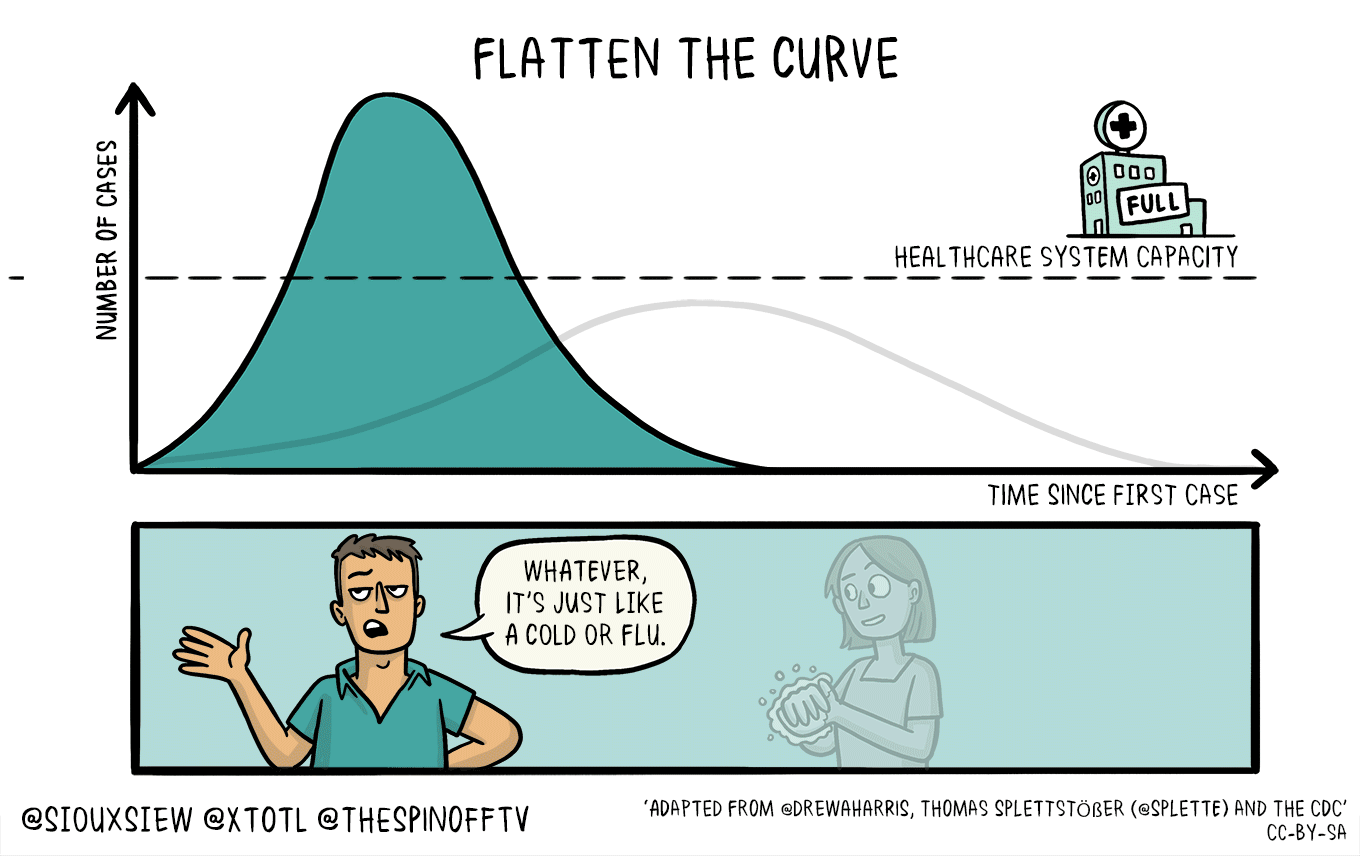
訳すとこんな感じ。
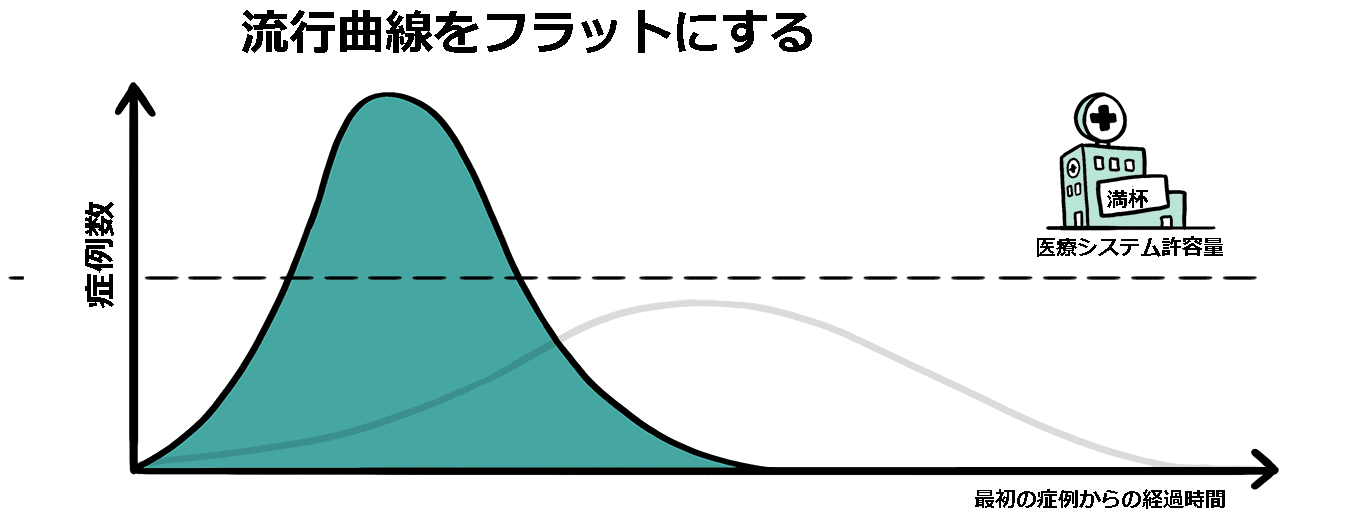
横軸に平行な点線が病院の満杯数のライン(医療崩壊を起こす危険水域)
今回のCovid-19の流行曲線はこういう釣り鐘状ではなく台形に近いものになるんじゃないかと思われます。
パニックにならずに、注意して…..
手を洗う
顔には触れない
病気になったら家にいる
最初のころの中国・武漢での指数関数的な感染者数の増大と、致死率の高さは、何でもかんでも患者を医療現場に押し込んだことで、現場がパニック状態に陥ったことにも原因があるそうです(「丁香園」(DXY.cn)の采桑陌上试春衣さんの投稿、Webや機械翻訳で王冠やクラウンという訳があったらそれはコロナの意味です、コロナはラテン語で王冠の意味)。
また、現在の状況も以下の地図やグラフを眺めていると確認できます。
リアルタイム・マップ Coronavirus 2019-nCoV
オレンジ:中国での感染状況
グリーン:全体の回復者数
イエロー:中国以外での感染状況
イエローカーブが途中から、オレンジの初期の増加曲線と似てきています。
このカーブが指数関数的な曲線になってきているらしいというのはこの記事参照
2020/03/25現在、サイトは単一のカーブのみになっています。また、GiHubのデータフォームも頻繁に変更されています。03/22以降のデータではUSAのデータが詳細になっていますね。位置情報の欠損している地点も見受けられます。
今後は左の赤い数字と右側の緑の数字を追いかけることになるのかな?
日本を含め、我々は今「フェーズ1」の時期にあり、この状態を長くすることが重要なのだそうです(上記のサイトではこの期間は1~2年とされています)。
上手のグラフでは、中国での曲線の増加幅は1ケ月くらいで小さくなっています。
つまり、(2020/03/10現在)中国の状況を鑑みるとまずはこれからの1ケ月が、抑え込みに重要な時期にあたるってことかな?
これまでは、いわば助走期間で、これからが本番とも言えます。
こういうグラフを毎日確認するだけでも、いくらか冷静に判断できるようになると思います。
見えないものに対峙する場合は、見えるものを指標にします。マスクも大事だけど、敵は「我々の手」を介して攻撃してくると….。手洗い大事。
Covid-19は思いの外、手強い相手のようです。インフルエンザのように数週間や数か月の単位で終了するような類のものではないってことです。
歴史上、振り返って「Covid-19以前と以後」と呼ばれることになるかもしれませんね。
Covid-19の3つのフェーズ–そしてそれをどのように管理可能にするか(抜粋)
このレポートの執筆者のシウクシー・ワイルズ博士は、ニュージーランドに拠点を置く英国の微生物学者および科学コミュニケーターです。彼女の専門分野は感染症と生物発光です。 オークランド大学の生物発光スーパーバグラボの責任者であり、生物発光を使用して、食中毒、結核、病院のスーパーバグなどの微生物感染症の理解を深めています。(Wikipedia)
ニュージーランドは1918年のスペイン風邪の防疫に後手を踏んだため、人口の1%が死亡したという経験があるので、感染症に敏感なお国柄かもしれません。
以下はThe three phases of Covid-19 – and how we can make it manageableからの抜粋です。
The three phases of Covid-19 – and how we can make it manageable
Covid-19の3つのフェーズ–そしてそれをどのように管理可能にするか
How is the coronavirus likely to play out, how does it end, and does our behaviour make a difference? Here infectious diseases expert Dr Siouxsie Wiles walks us through the epidemic curve.
コロナウイルスはどのように機能し、どのように終了し、私たちの行動は違いをもたらすのか?ここでは、感染症の専門家であるシウクシー・ワイルズ博士が、流行曲線を説明します。
It was a graph of the number of cases reported each day, something we call an epidemic curve. It looked a bit like this.
これは、毎日報告される症例数のグラフであり、私たちは流行曲線と呼んでいます
But before we get to that, let me just explain epidemic curves in a little more detail. First, they have three parts: a start (phase one), a middle (phase two), and an end (phase three). Each of these phases is influenced by different things. Such as, how infectious is the virus or bacterium? How is it transmitted? Is it person-to-person, or from eating or drinking? If it’s person-to-person, are people infectious before they have symptoms and don’t know they are unwell? And if people do have symptoms, are they mild enough for people to go about their daily routine? Is everyone susceptible to the infection, or just some people? What resources do we need and have to contain the outbreak? The answers to these questions will influence the shape of the epidemic curve.
しかし、その前に、流行曲線についてもう少し詳しく説明しましょう。まず、流行曲線には3つの部分があります:開始(フェーズ1)、中間(フェーズ2)、終了(フェーズ3)。それぞれのフェーズは、異なるものに影響されます。例えば、そのウイルスや細菌はどのくらい感染力があるのか?どのようにして感染するのか?人から人への感染なのか、それとも飲食物からの感染なのか?人から人への感染であれば、症状が出る前に感染していて、病気であることに気づかないのか?また、症状が出た場合、その症状は日常生活を送るのに十分なほど軽いものなのか?誰もが感染しやすいのか、それとも一部の人だけが感染しやすいのか?感染拡大を食い止めるために必要な資源、持っている資源は何か?これらの質問への答えが、流行曲線の形を左右します。
Phase one of the Covid-19 epidemic curve – containment
Covid-19流行曲線のフェーズ1 –封じ込め
At the moment, Aotearoa and many other countries are in phase one for Covid-19. This is the start of the curve where cases pop up sporadically as people who have contracted the virus in one country travel to other countries.
現在、アオテアロアと他の多くの国はCovid-19のフェーズ1にあります。 フェーズ1は、ある国でウイルスに感染した人が他の国に旅行する際に、散発的に症例が発生する曲線の始まりです。
Think of Covid-19 as several fires blazing away, with embers shooting off in all directions. Our goal is to stop those embers from turning into another blazing fire. It’s beginning to look like anyone who has travelled overseas recently should think of themselves as a potential ember and be on the lookout for symptoms.
Covid-19は、燃えさかる火が四方八方に放たれ、いくつかの火が燃え上がると考えてください。私たちの目標は、これらの残り火が別の燃える火に変わるのを防ぐことです。最近海外に旅行したことがある人は、自分を潜在的な残り火だと考え、症状に注意を払う必要があるように見え始めています。
Sticking with the fire analogy, it’s not unusual for embers to smoulder a little when they land. That’s why public health officials are actively looking for people who have been in close contact with someone with Covid-19. This is called contact tracing. Anyone at high risk of having contracted the virus is then put into isolation. Here in New Zealand, two of the five people who have tested positive for the virus so far are partners or relatives of those “embers”.
火に例えれば 燃えカスが少し燃え上がるのは 珍しいことではありません。 だから 公衆衛生当局は Covid-19に感染した人と密接に接触した人を積極的に探しています。 これは接触者追跡と呼ばれています。ウィルスに感染した危険性の高い人は隔離されます。 ここニュージーランドでは、これまでにウイルスの陽性反応が出た5人のうち2人がパートナーか親族です。
Our aim is to stay in phase one.The longer we can stay in phase one, the better we can prepare for phase two. If we can stay here for the next one to two years, then hopefully a vaccine will become available and we can avoid phases two and three altogether. One way to do that would be just to ban all international travel. No one in or out. Just to be clear, I don’t think this is the right approach to take. One to two years is a long time.
私たちの目的は、フェーズ1にとどまることです。フェーズ1にとどまる時間が長いほど、フェーズ2の準備が整います。今後1〜2年間ここに留まることができれば、ワクチンが利用できるようになり、フェーズ2と3を完全に回避できることを願っています。そのための1つの方法は、すべての国際旅行を禁止することです。誰も出入りしないのです。 明確にするために、これが正しいアプローチだとは思いません。 1年から2年は長い時間です。
My advice to everyone, even if you haven’t travelled, is to be on the lookout for any of the symptoms of Covid-19. If you have a fever, or a cough, or shortness of breath, stay away from other people if you can. If you’ve a runny nose or sore throat this could be a really mild form of Covid-19 so I would also isolate yourself.
旅行していない場合でも、Covid-19の症状に目を光らせてください。発熱、咳、息切れがある場合は、可能であれば他の人から離れてください。 鼻水やのどの痛みがある場合、これはCovid-19の非常に穏やかな形である可能性があるため、自主隔離します。
Phase two – community transmission
フェーズ2 –コミュニティ伝播
The way Covid-19 is playing out globally, we are going to enter phase two at some point. This will happen when people who don’t realise they have contracted Covid-19 go about their daily lives rather than stay isolated. More and more cases will be reported each day as the virus transmits from person to person out in the community and outpaces our ability to keep up with the contact tracing. The quicker and higher the numbers rise, the more likely the outbreak will overwhelm us, making it harder to control.
Covid-19がグローバルに展開する方法は、いずれかの時点でフェーズ2に入ります。 これは、Covid-19に罹っていることに気付いていない人が孤立したままではなく、日常生活を送るときに起こります。ウイルスがコミュニティ内の人から人へと伝染し、連絡先の追跡に追いつく私たちの能力を上回るため、毎日ますます多くの症例が報告されます。感染の数字が速く、高くなるほど、アウトブレイクが私たちを圧倒する可能性が高くなり、制御が難しくなります。
The data so far suggests all of us are susceptible to the virus. It’s clear from what’s happened overseas that many people with Covid-19 spent many weeks being treated in hospital before they recovered. This isn’t a trivial disease. China built two new hospitals in a matter of weeks to keep up with demand. Do we have the resources to do that if it came to it?
これまでのデータは、私たち全員がウイルスに感染しやすいことを示唆しています。 海外での出来事から、Covid-19の多くの人が回復するまでに病院で治療を受けるのに何週間も費やしたことが明らかになっています。これは些細な病気ではありません。 中国は、需要に対応するために、わずか数週間で2つの新しい病院を建設しました。 それが起きた場合、そういうことを行うための資源を私たちは持っているでしょか?
Flattening the curve
曲線をフラットにすること
Our aim will be to keep phase two of the epidemic curve as flat as possible, keeping the number of cases reported each day as low as we can. If we can achieve that, it’ll mean we’ll be able to treat everyone who needs treating.We can all help with this by washing our hands regularly, avoiding touching our mouth, nose, and eyes, and staying away from other people when we are sick. This also means calling ahead if you feel sick and want to go to the doctor or hospital. The last thing we need is loads of our healthcare workers in isolation because they’ve been exposed to Covid-19. Forty-five staff from North Shore Hospital have been isolated as a precaution because of a probable case.
私たちの目標は、流行曲線のフェーズ2をできるだけフラットに保ち、毎日報告される症例数をできるだけ少なくすることです。私たちは、定期的に手を洗い、口や鼻、目に触れないようにし、病気の時には他の人に近づかないようにすることで、これを支援することができます。また、病気になったと感じ、医者や病院に行きたいと思ったら、早めに電話をすることも大切です。最後に必要なのは、医療従事者がCovid-19に曝されたために隔離されていることです。ノースショア病院の45人のスタッフは 症例の可能性があるので 予防措置として隔離されています。
Another thing we are all going to need to start doing soon is minimising or avoiding contact with other people. This is called social distancing. If you are greeting people, don’t hug, shake hands, hongi, or kiss. Bump elbows or feet instead. Work from home if you can. Much as it pains me to say it, social distancing also means avoiding public transport (get on your bicycle!). Similarly, it means avoiding gyms, churches, cinemas, concerts, and other events and places where people congregate. At the community level we may need to close schools, universities, museums, and workplaces, limit public transportation, and cancel public events.
他にすぐやるべきことは、他の人との接触を最小限に抑えるか避けることです。これは社会的距離と呼ばれます。
人に挨拶する場合は、抱擁したり、握手したり、Hongi(ニュージーランドの先住民マオリ族が行う挨拶の仕方)したり、キスしたりしないでください。 代わりに肘または足をバンプします。できれば自宅で仕事をします。これを言うのはつらいですが、社会的距離は公共交通機関を避けることも意味します(自転車に乗る!)。 同様に、ジム、教会、映画館、コンサート、その他のイベントや人々が集まる場所を避けることを意味します。コミュニティレベルでは、学校、大学、博物館、職場を閉鎖し、公共交通機関を制限し、公共イベントをキャンセルする必要がある場合があります。
Moving into phase three
フェーズ3への移行
We move into phase three when the outbreak is either brought under control or everyone has been infected and there are no more susceptible people left to infect.
アウトブレイクが制御されるか、全員が感染していて、感染しやすい人が残っていない場合、フェーズ3に移行します。
Given we are one to two years away from a vaccine, bringing Covid-19 under control is obviously the goal here.
But if there are still susceptible people in a population and we stop taking all the right measures then we will see cases flare up again.
ワクチンから1年から2年が経過していることを考えると、Covid-19をコントロールすることがここでの目標であることは明らかです。
しかし、ある集団の中にまだ感染しやすい人がいて、我々がすべての適切な措置を取るのを止めれば、再び症例が再燃するのを見ることになるでしょう。
Hopefully, if we can stop all human-to-human transmission of Covid-19 that’ll be the end of this coronavirus too. But it’s clear that we’ll all have to play our part to make that a reality.
Covid-19のすべての人から人への感染を止めることができれば、このコロナウイルスの終わりにもなります。 しかし、それを実現するために私たち全員が役割を果たす必要があることは明らかです。
Appendix1
Covid-19対策に「石けんでの手洗いが最強」という意味がよくわかる記事 OR よくわかる動画
Appendix2
様々な国のCovid-19の流行が増加傾向にあるのか減少傾向にあるのかを可視化し比較してみましょう
Databrew’s COVID-19 data explorer
Appendix3
「新型コロナウイルス感染症に対する個人防護具の適切な着脱方法」
医療現場向けの動画ですが全40分の前半20分は一般向けに十分参考になる内容です。
Appendix4
私たちにできること
●3密(密閉、密集、密接)を避ける
●社会的距離を取る(2m以上)
大きな声で話す人とはもっとね。
●手の消毒・殺菌(石けんを使った手洗いの励行、20秒以上)
水洗いだけではペケ、水だけではウィルスの脂質の被膜(エンベロープ)を壊せない、手全体のウィルスを壊すには20秒くらいかかります
●人との接触の回避(通常の8割減、あるいは17分/日)
例えば1日に20人に会わなければならない場合は4人にする。これが無理な場合は、1人に会う時間を1分以内にする。まぁ事前に電話等で打ち合わせておいてどうしても会う必要がある場合は、書類と笑顔だけ渡すようにするって感じですかね。
VRを使ったコワーキングの技術の進化が待たれます。
注
人と会わないことが苦痛になって「私1人位なら…..」などと思ってしまったら、それがいかに悲惨な結果をもたらすか、以下の記事参照
ウイルスの感染拡大を防ぐには「1人の友人と会うことも控える必要がある」とわかりやすく示す図
このウィルスの怖さというか、したたかさは「宿主が無自覚なまま誰かに染して」拡散するという生存戦略をとっているらしいというところでしょうか?
感染症の流行を可視化
数理モデル
まだまだ先の話ですが、
流行曲線がフラットになった後、我々は何をすりゃいいのかというと…..
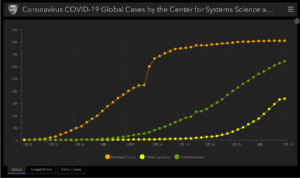
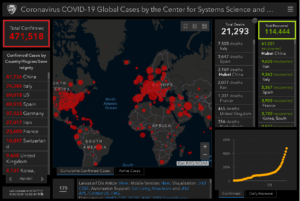
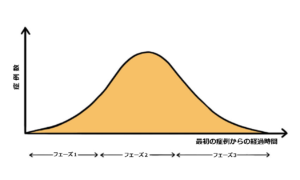
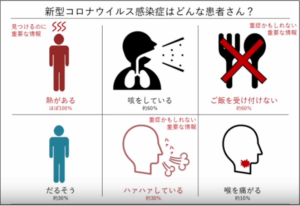
Leave a Reply